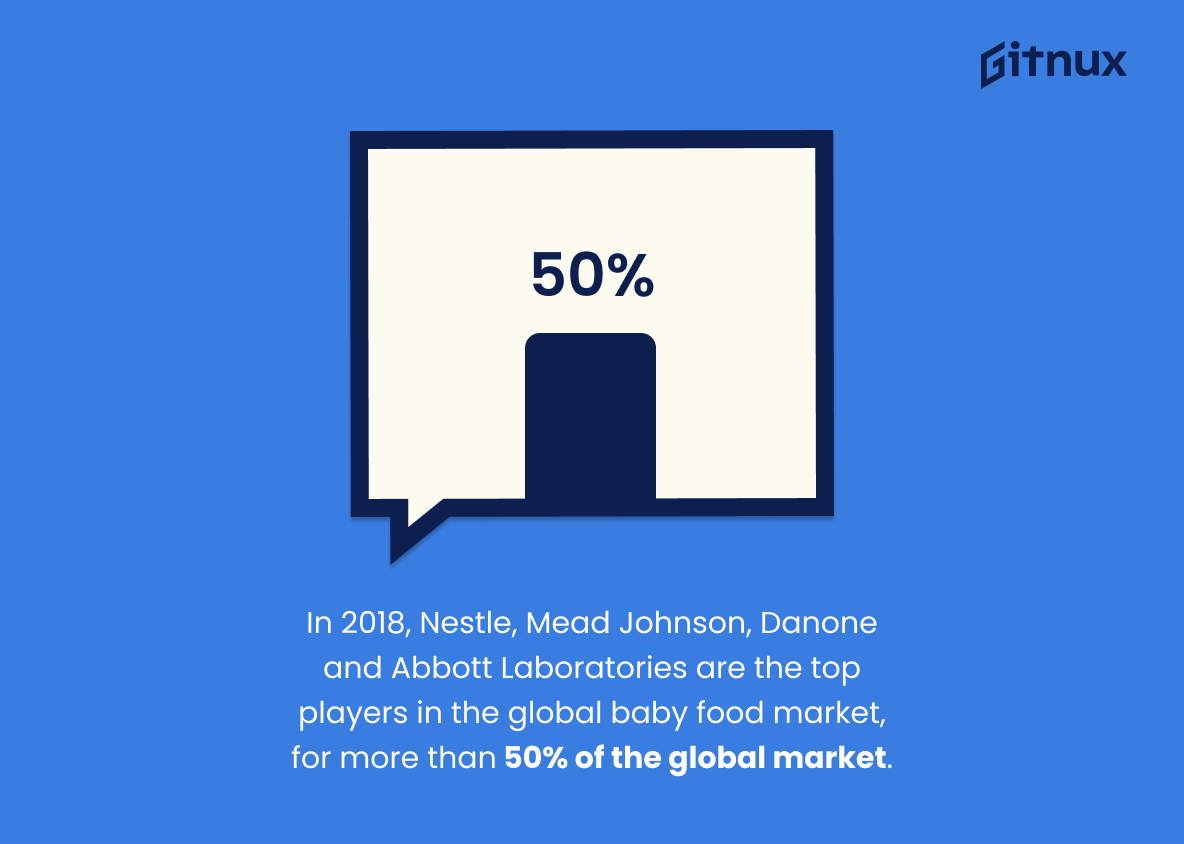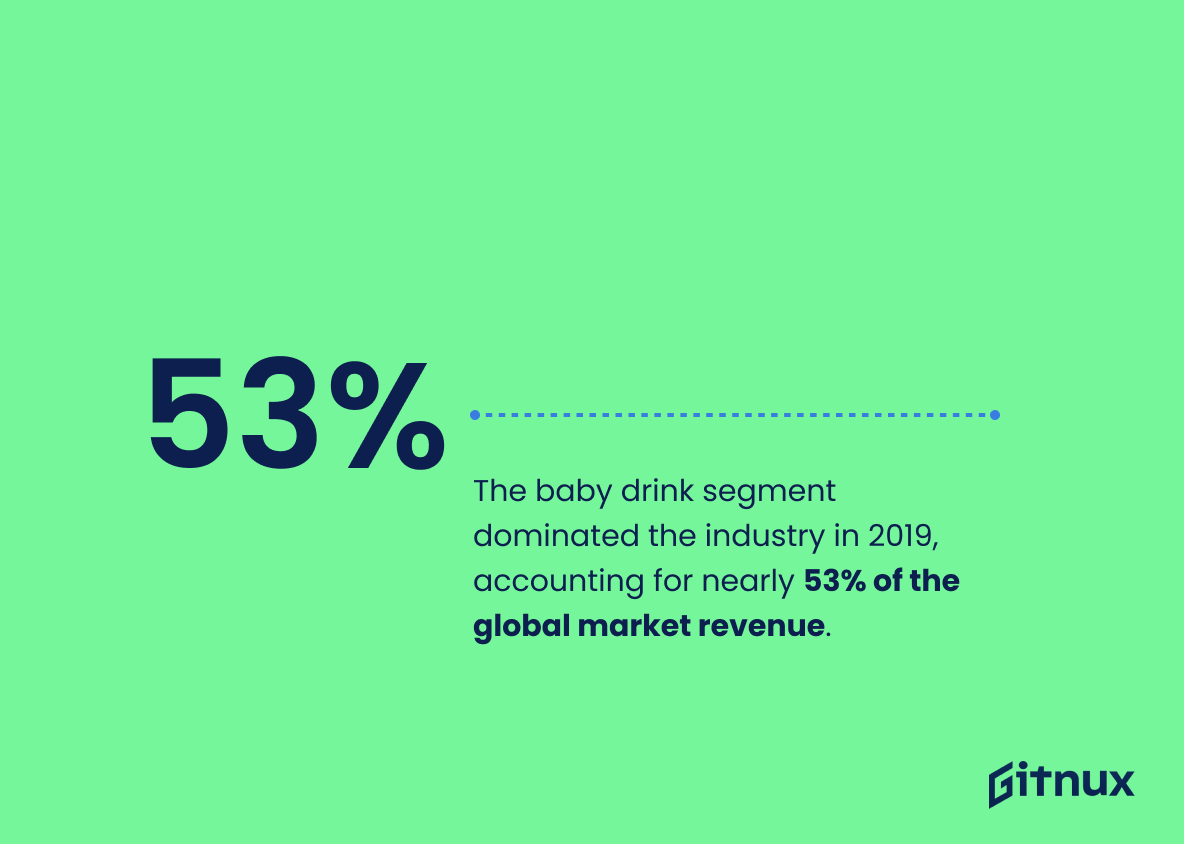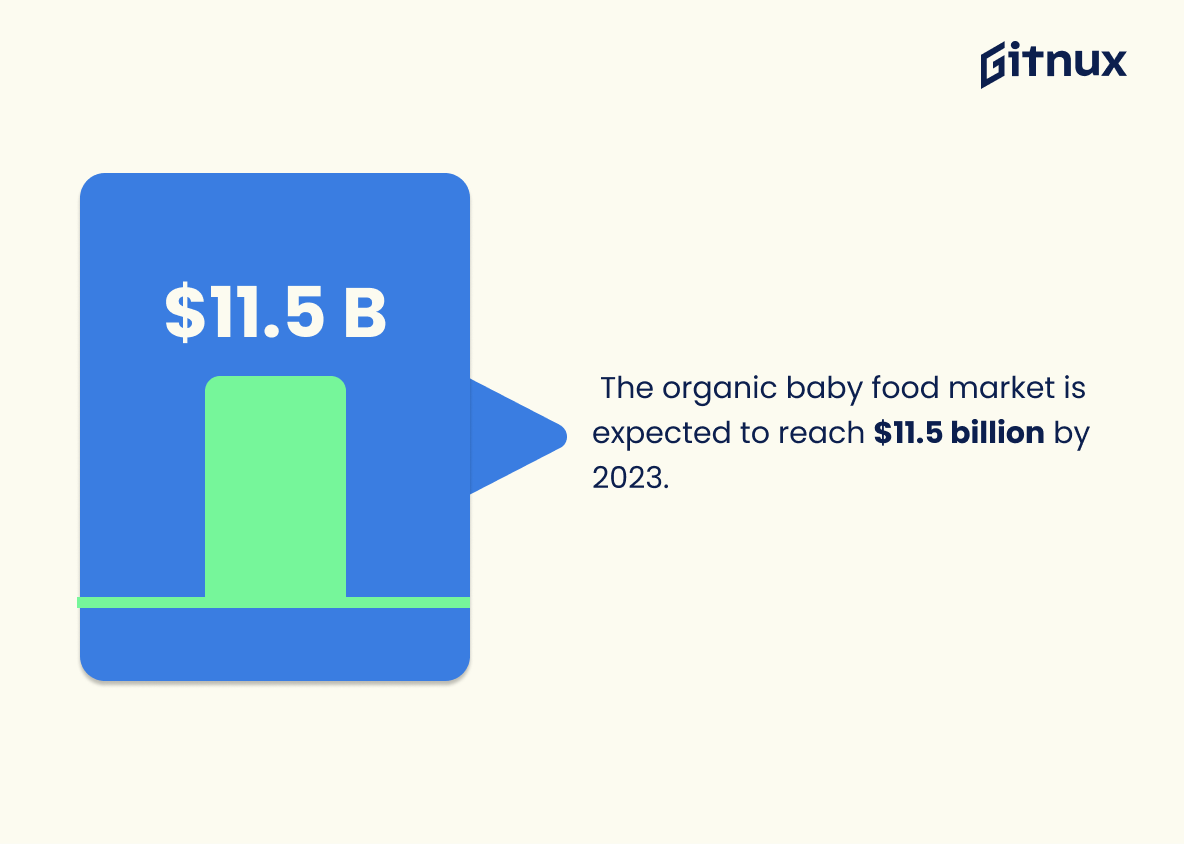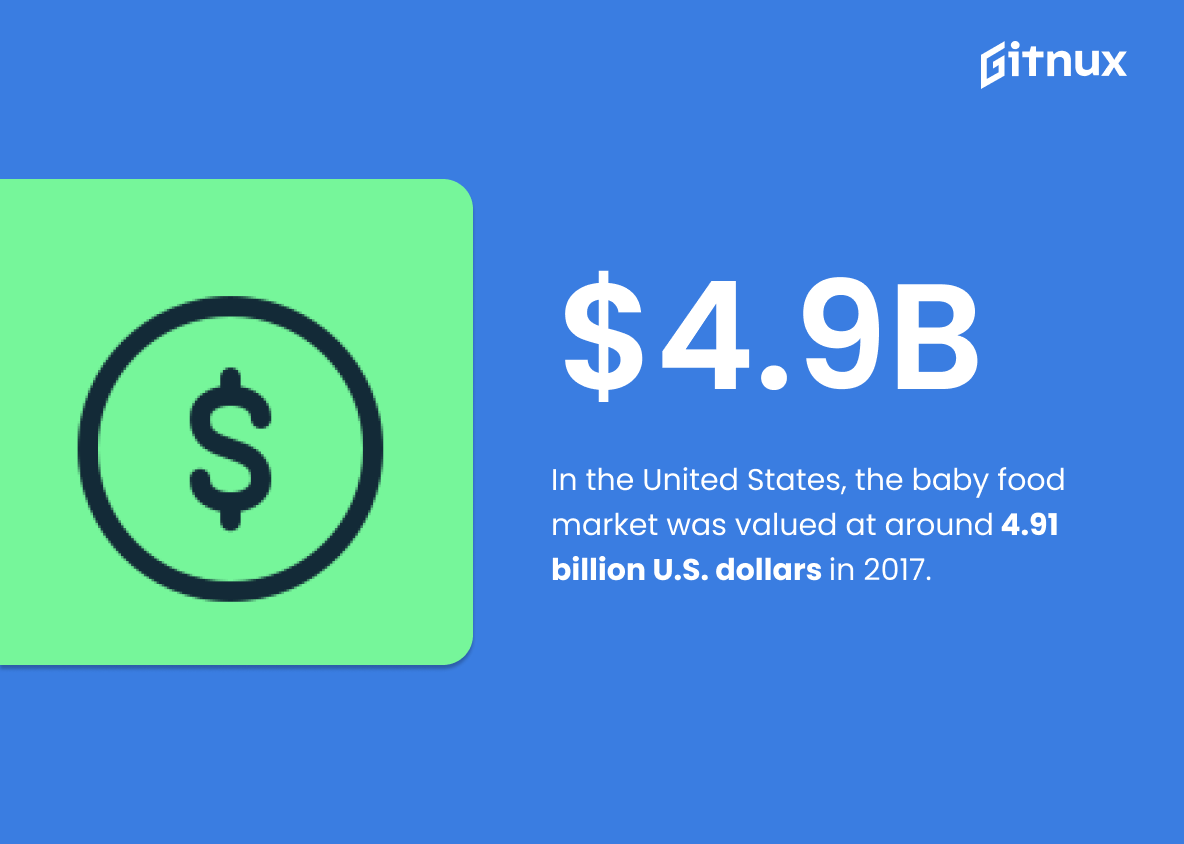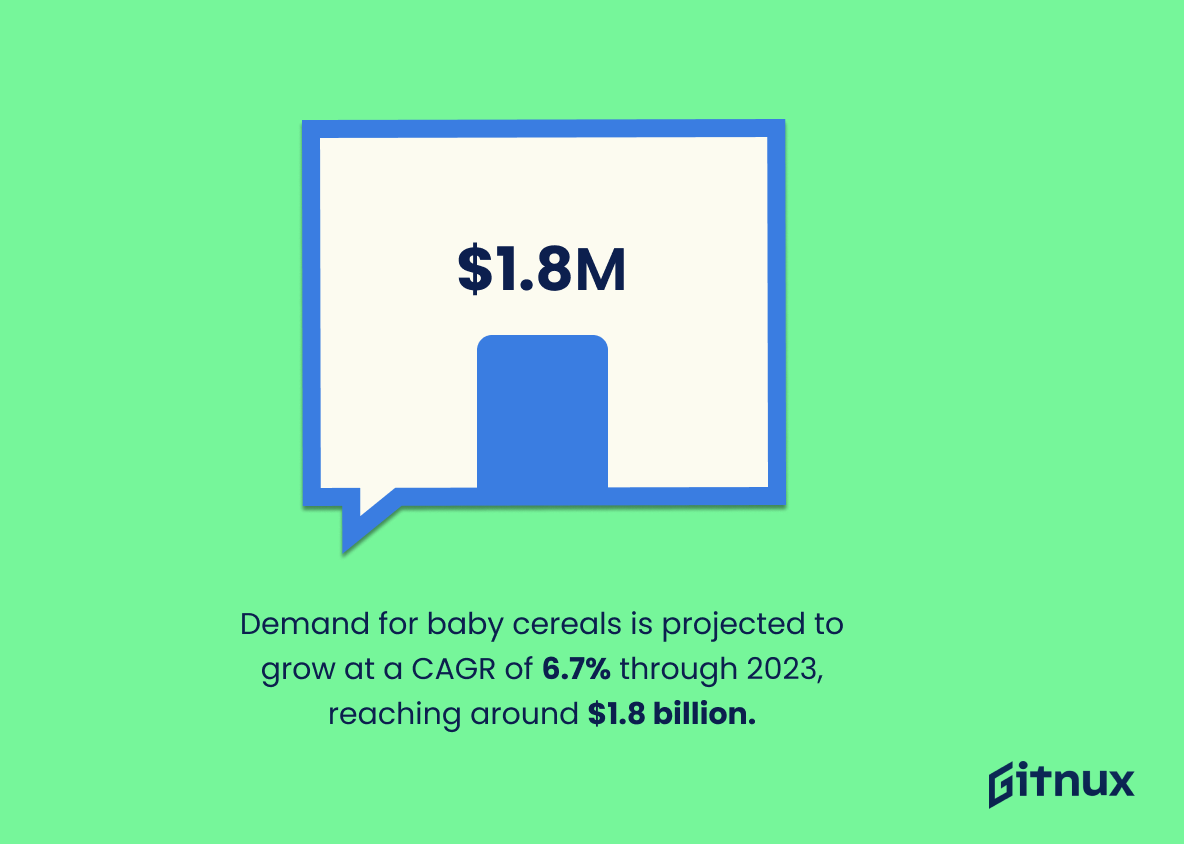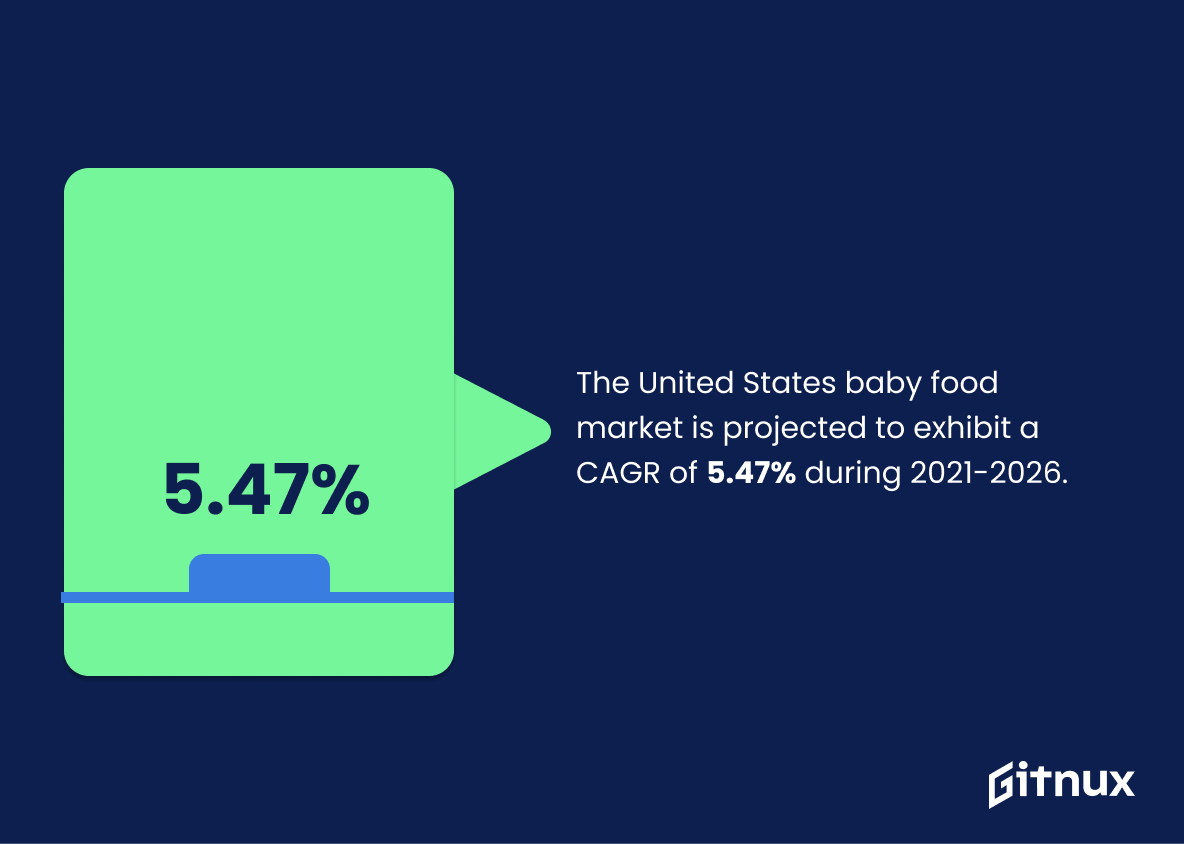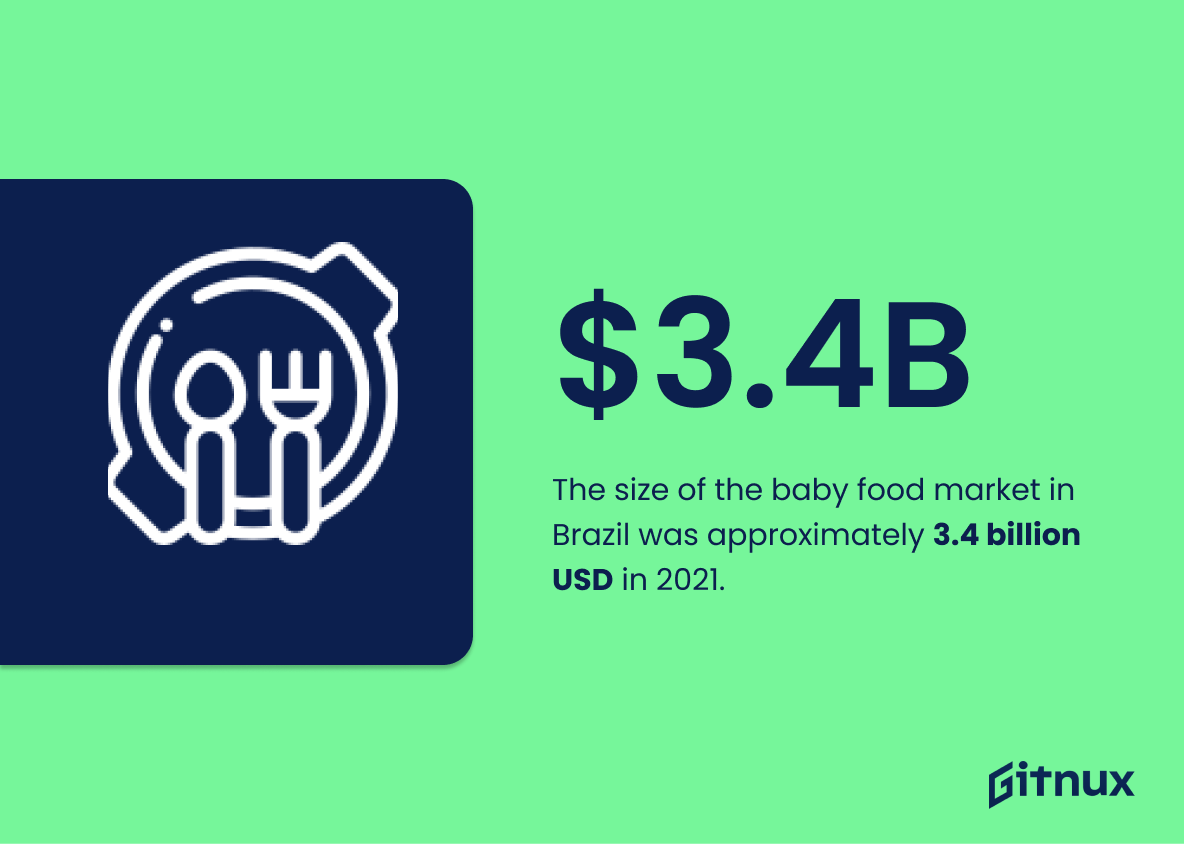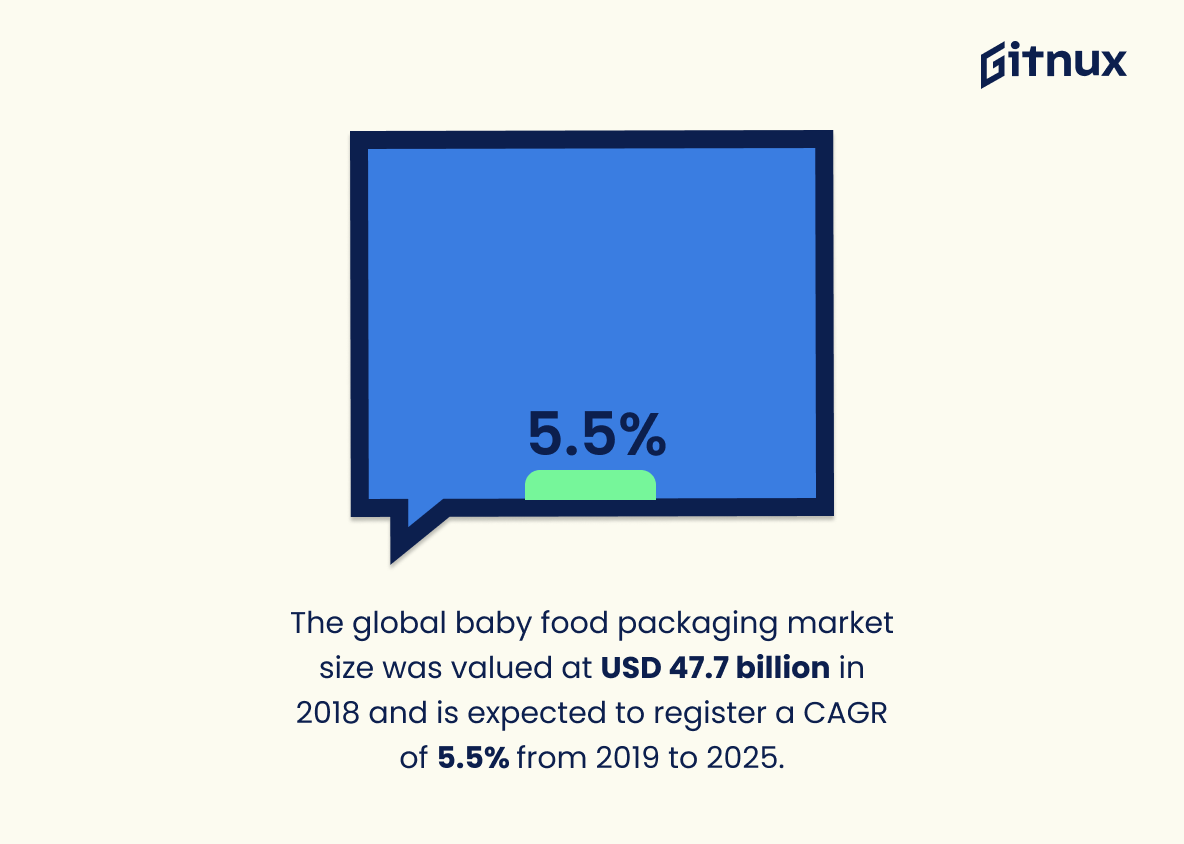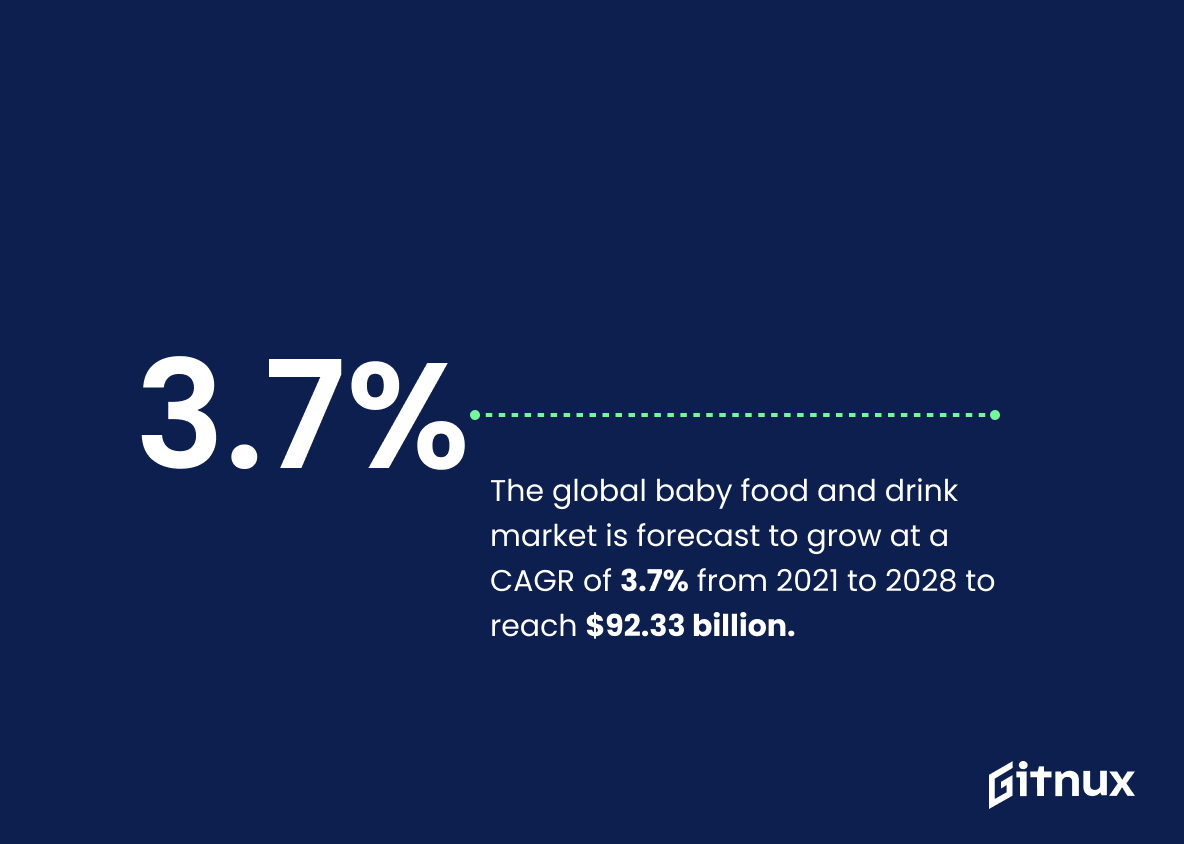As parents increasingly prioritize the quality and nutritional value of their little one’s meals, the baby food industry has experienced tremendous growth. This global market is continuously evolving, spurred by factors like health-conscious parenting, convenient packaging options, and innovative food technology. Our in-depth exploration of the baby food industry statistics will uncover the current trends, future forecasts, and various challenges. Whether you are a new parent, an investor, or simply curious about this flourishing sector, our comprehensive guide will provide you with the crucial insights you need to understand the dynamics of this fascinating industry.
The Latest Baby Food Industry Statistics Unveiled
In 2019, the baby food sector in China accounted for 15.01% of the Asian market.
Illuminating the vast potential and diverse opportunities, this riveting statistic underscores the grandeur of China’s baby food sector in 2019; comprising an impressive 15.01% of the total Asian market. This percentage shines light on the immense market share China holds, laying a groundwork for understanding economic trends, demographic shifts, and consumer preferences within Asia’s rapidly evolving baby food industry. As the figures intertwine, they not only depict the current business landscape but also pave the way to anticipate future trends, crucial for investors and industry stakeholders. This incandescent beacon of market data, therefore, becomes an essential piece in the grand jigsaw of baby food industry statistics.
In 2018, Nestle, Mead Johnson, Danone and Abbott Laboratories are the top players in the global baby food market, accounting for more than 50% of the global market.
A blog post about Baby Food Industry Statistics serves as a navigational beacon, illuminating the industry’s landscape. When it highlights that, in 2018, Nestle, Mead Johnson, Danone and Abbott Laboratories were the dominating figures in the global baby food market, it essentially sets the battlefield. This statistic positions these organizations as the exemplary titans of the industry, the trendsetters dictating the dynamics of the global market. These entities, in essence, function as the threads weaving the giant tapestry of the baby food industry. By accounting for more than 50% of the global market, they influence the policies, innovations and consumer behaviors that ultimately shape this industry. Hence, when analyzing the baby food industry, one cannot overlook the impact of these market leaders, making this statistic pivotal.
The baby drink segment dominated the industry in 2019, accounting for nearly 53% of the global market revenue, due to its wide-scale usage for infant nutrition.
Within the realm of the constantly evolving baby food industry, a noteworthy underpinning of the dominion established by the baby drinks segment is its contribution to almost 53% of the global market revenue in 2019. This substantial percentile, which might seem just numbers on the surface, embodies the profound preference for baby drinks as a primary source of infant nutrition. The power of this data strengthens the understanding of the industry, guiding manufacturers, investors, and other stakeholders to discern the notable demand for baby drinks amidst other baby food products. Therefore, it enables them to craft their strategies, design their products and target their consumers more accurately, thereby contributing to both the health growth of infants worldwide and the prosperous development of the baby food industry.
The organic baby food market is expected to reach $11.5 billion by 2023.
Spotlighting a figure as dynamic as an anticipated $11.5 billion value for the organic baby food market by 2023, serves as a powerful gaze into the growing health-conscious trend among new parents. It paints a vivid picture of the potential lucrative opportunity for both new entrants and existing players in the industry to tap into. This sharp increase in value not only mirrors the demand for wholesome, residue-free nourishment for our youngest generation, but it also signifies a major shift in consumer purchasing habits, making it a bellwether for innovation in the baby food industry. Thus, for any stakeholders in the baby food industry, this sky-rocketing forecast becomes a directional compass, guiding their strategic market moves towards a more organic future.
As of 2019, in the UK, 76% of parents are feeding their babies ready-made baby meals.
In the narrative of UK’s baby food industry statistics, this striking figure – 76% of parents using ready-made baby meals for their little ones as of 2019 – paints a vibrant picture of current market dynamics. It helps to juxtapose the burgeoning demand for convenient, no-fuss nourishment options for babies against the backdrop of parents’ busy lives. Clearly, ready-made baby meals are finding their way to the high chairs – a trend that seems to be steering the industry. Companies in the sector, thus, have an information goldmine in front of them, with potential insights for new product development, marketing strategies, and the possibilities of further market penetration.
In the United States, the baby food market was valued at around 4.91 billion U.S. dollars in 2017.
Highlighting the valuation of the U.S baby food market at around 4.91 billion U.S. dollars in 2017 provides a snapshot of the industry’s significant monetary value. It marks the industry’s inherent importance in the American economy and serves as a yardstick to measure future growth, decline, or stability. This particular piece of information sets the tone for reviewing year-on-year changes, assisting in discerning market patterns and dictating crucial business decisions in the baby food industry. Besides, it underscores the potential for profit and investment opportunities within this sector, enticing potential stakeholders to dive deeper into this field.
Demand for baby cereals is projected to grow at a CAGR of 6.7% through 2023, reaching around $1.8 billion.
The intriguing trajectory of baby cereal demand, with a projected Compound Annual Growth Rate (CAGR) of 6.7% through 2023, envisions a market potential pulsating around an impressive $1.8 billion. In the realm of baby food industry statistics, this data nugget serves as a potent indicator of emerging market dynamics and economic opportunity. Brewing beneath the surface of these numbers are fierce competition, booming innovation, and possibly, the next gold rush in baby food industry. The amplifying demand underscores the shifts in consumer behaviour, underpinned by factors such as increased nutrition awareness among parents or changing lifestyle patterns. It also subtly whispers “Stay Alert.” to the industry keepers, encouraging them to adapt or innovate to the surfacing trends, thereby remaining indispensable in the swelling sea of this billion-dollar industry.
In 2018, French-based group Danone holds 19.8% of the global baby food industry.
Highlighting that the French-based group Danone held 19.8% of the global baby food industry in 2018 clearly underlines the powerhouse role this company takes in the international market. It suggests the company’s significant influence, and potentially sets the standard for product quality, innovation, and marketing strategies within the industry. This considerable market share also provides context for competition, underscoring the opportunity and challenge for other players to vie for or rebalance market share given Danone’s formidable presence. Overall, this statistic paints a valuable picture of the global baby food industry landscape.
The United States baby food market is projected to exhibit a CAGR of 5.47% during 2021-2026.
In the context of a blog post about Baby Food Industry Statistics, the projection of the United States baby food market expanding at a CAGR of 5.47% between 2021 and 2026, acts as a lens providing a glimpse into the future vibrancy and energy of this industry. It delivers a compelling narrative of growth and prosperity that could potentially draw interest from investors, businesses, and marketers alike. Embracing these figures paints a vivid picture of a thriving ecosystem ripe for fresh innovation, exciting opportunities, and transformative strategies, solidifying the Baby Food Industry’s position as a significant player in the food market landscape of the U.S.
In 2020, the overall penetration of online baby food sales reached 26% globally.
The tapestry of baby food industry statistics is enriched by the strand of data stating that in 2020, indeed, 26% of this industry had transitioned into the digital realm globally. Such a fact offers a multifold perspective on how traditional baby food markets are significantly disrupted by the growing prevalence of online sales. This statistic is a compelling backdrop for the changing consumer behavior, cross-border e-commerce advancements and the importance of digital transformation in this business sector. More so, it signifies that the ‘food for tots’ industry is becoming aggressively progressive, offering a guiding light for market participants to strategize and align their business decisions.
The size of the baby food market in Brazil was approximately 3.4 billion USD in 2021.
In the vibrant mosaic of the baby food industry, the figure that the market size in Brazil reached approximately 3.4 billion USD in 2021 shimmers with significance. It paints a distinct picture of consumer behavior, indicating strong demand and high worth ascribed to convenience and quality in infant nutrition in the region. Moreover, this robust figure whispers of sparkling potential for growth and investment in the Brazilian market, enticing stakeholders to stir the waters of opportunities present there. Through the lens of world economics, the statistic provides a keyhole view into the relative priorities placed on child nourishment in developing nations, adding fuel to the ongoing discussions on nutritional gaps and food security. Thus, the 2021 valuation of the baby food market in Brazil stands as a memorable landmark on the map of industry trends.
The global baby food packaging market size was valued at USD 47.7 billion in 2018 and is expected to register a CAGR of 5.5% from 2019 to 2025.
Diving into a sea of data, one pearl stands out distinctly; the robust valuation of the global baby food packaging market at USD 47.7 billion in 2018. Delving further into this treasure trove of data unveils an encouraging forecast, the market is predicted to expand at a Compound Annual Growth Rate (CAGR) of 5.5% from 2019 to 2025.
This twofold revelation bestows a sense of the mammoth proportions this industry could reach. The prior figure solidifies the industry’s standing as a key player in not just the food sector but the global economy, while the predicted CAGR reflects upon the industry’s ability to sustain and proliferate growth well into the future. Within the baby food industry, packaging isn’t merely a necessity, but a catalyst for demand, often influencing purchasing decisions.
Whether you’re a manufacturer strategizing about market penetration, an investor deciding where to place your bets, or simply a keen observer of market trends, these statistics illuminate the vitality and potential of the baby food industry, guiding your critical decisions and providing a compass to navigate through the dynamic marketplace.
The global baby food and drink market is forecast to grow at a CAGR of 3.7% from 2021 to 2028 to reach $92.33 billion.
As we delve into the intriguing world of baby food industry statistics, consider the noteworthy forecast that the global baby food and drink market is set to experience a 3.7% CAGR growth from 2021 to 2028, raising its value to a formidable $92.33 billion. This prediction sets the stage for exciting developmental strides within this sector, vividly painting a picture of a rapidly expanding landscape. Not only does it highlight the industry’s dynamic momentum, but it also underpins potential opportunities for innovation, competition, and investment that market players could tap into. The embarked journey to this mind-boggling figure is an invitation for everyone, from manufacturers to investors and researchers, to keenly follow this sector’s evolution, shaping and being shaped by consumer preferences, technological advancements, and market trends. Once realized, this significant growth can tell a compelling success story for the sector, reinforcing its influence within the global economy.
Conclusion
In final judgement, the baby food industry continues to evolve, fueled by changing parental preferences, nutritional findings, and countless avenues for innovation. The statistics detailed in this post clearly illustrate the industry’s significant growth and the accelerating trend towards organic and allergen-free products. Manufacturers who adapt to these shifts and focus on the health and wellbeing of children stand to make substantial gains in an ever-expanding market. As consumer awareness and demand for quality continue to rise, the baby food industry is definitely a sector to watch for exciting developments and robust growth.
References
0. – https://www.www.just-food.com
1. – https://www.www.reportlinker.com
2. – https://www.www.futuremarketinsights.com
3. – https://www.www.statista.com
4. – https://www.www.grandviewresearch.com
5. – https://www.www.precedenceresearch.com
6. – https://www.www.alliedmarketresearch.com
7. – https://www.www.euromonitor.com

